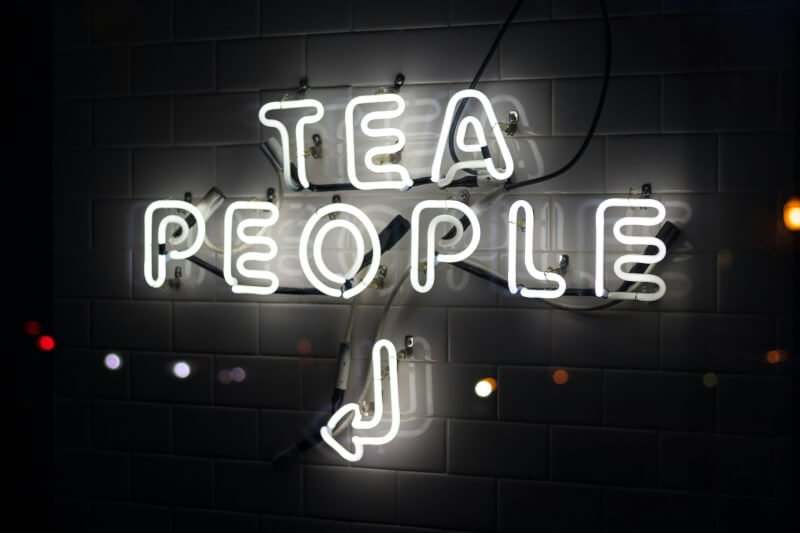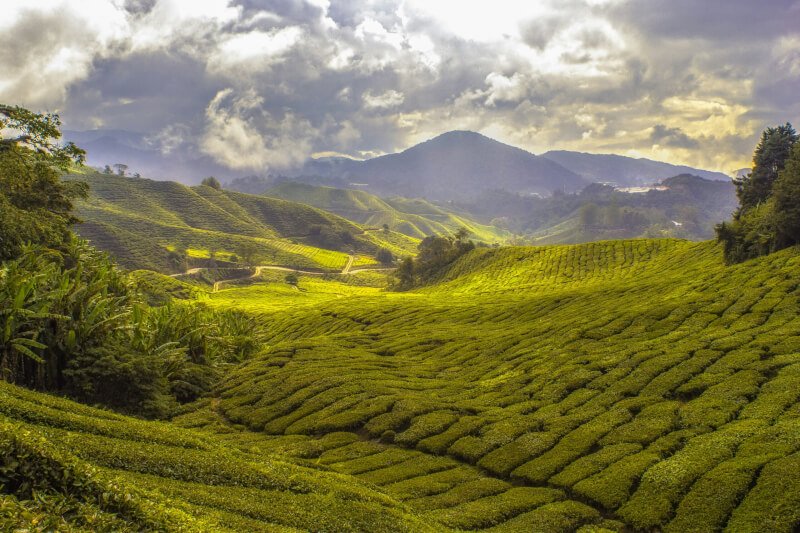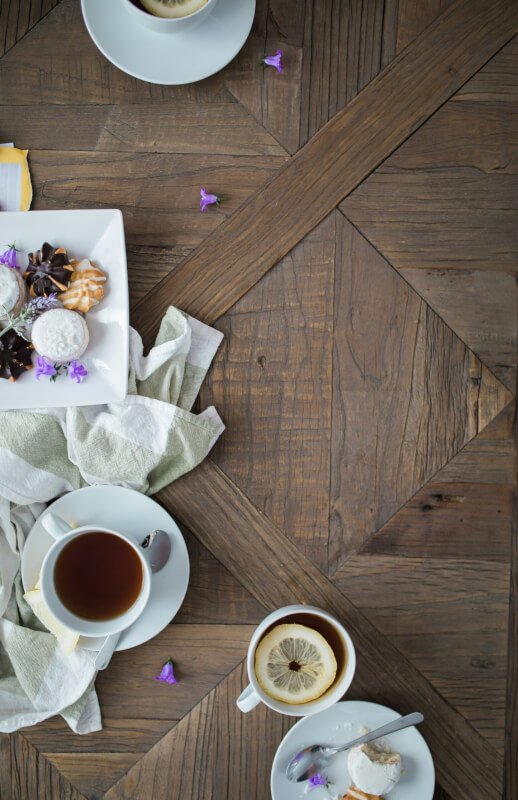If you’re looking to elevate your tea-drinking experience, then it’s time to venture beyond the traditional tea leaves and explore the world of unique ingredients. From fragrant herbs to exotic spices, incorporating these additions into your brew can bring a whole new level of flavor and excitement to your cup of tea. In this article, we’ll take a deep dive into the art of brewing tea with unique ingredients and discover the endless possibilities for enhancing your tea’s taste and aroma. So grab your teapot and get ready to embark on a flavorful journey like no other.

Tea Brewing Basics
Tea brewing is an art that can be enjoyed by anyone. Whether you are a tea enthusiast or a beginner, knowing the basics of tea brewing is essential to making a great cup of tea. In this article, we will explore the different aspects of tea brewing, from choosing the right tea to selecting the perfect brewing equipment.
Choosing the Right Tea
The first step in brewing a delicious cup of tea is choosing the right tea leaves. There are so many varieties of tea available, each with its own unique flavors and aromas. Green tea, black tea, oolong tea, herbal tea – the options are endless. It all boils down to your personal preference.
If you enjoy a delicate and light flavor, green tea might be the perfect choice for you. Black tea, on the other hand, offers a stronger and bolder taste. Oolong tea falls somewhere in between, with a complex and nuanced flavor profile. Herbal teas are caffeine-free and come in a wide range of flavors, from soothing chamomile to invigorating peppermint. The key is to experiment with different types of tea and find the one that suits your taste buds.
Water Temperature and Steeping Time
Once you have chosen your tea leaves, it’s crucial to pay attention to the water temperature and steeping time. Different types of tea require different water temperatures and steeping times to bring out their best flavors.
For delicate green and white teas, a lower water temperature of around 175°F (80°C) is recommended. Steeping these teas for too long can result in a bitter taste, so aim for a steeping time of 1-3 minutes.
Black teas and oolong teas, on the other hand, can withstand higher water temperatures of around 205°F (96°C). A steeping time of 3-5 minutes is generally recommended for these teas to allow their flavors to fully develop.
Herbal teas, being more forgiving, can be brewed with boiling water. Steeping time for herbal teas can vary depending on the desired strength of flavor, but a good starting point is 5-7 minutes.
Tea Brewing Equipment
Having the right equipment can make a world of difference in your tea brewing experience. While it is possible to brew tea with just a simple teapot and cup, investing in quality tea brewing equipment can enhance the overall quality of your tea.
A tea infuser or tea strainer is essential for loose-leaf tea brewing. These tools allow the tea leaves to steep freely in the water while keeping them contained for easy removal. Look for infusers or strainers with fine mesh to prevent tea leaves from escaping into your cup.
For those who prefer a more traditional brewing method, a teapot with a built-in strainer or a gaiwan, a traditional Chinese tea vessel, can be a great option. These allow for multiple infusions and give you more control over the steeping process.
If you enjoy cold brew tea, consider investing in a cold brew pitcher or a mason jar with a built-in infuser. Cold brew tea offers a refreshing and smooth flavor profile, perfect for hot summer days.
Unique Ingredients for Flavor Enhancements
While tea in itself is a heavenly beverage, adding unique ingredients can take your tea experience to another level. Here are some ingredients you can experiment with to enhance the flavors of your tea.
Herbs and Spices
Infusing your tea with herbs and spices can add a whole new dimension of flavor. Mint leaves, chamomile flowers, ginger, cinnamon, and cardamom are just a few examples of herbs and spices that can elevate your tea experience. Mint and chamomile are particularly soothing and refreshing, perfect for winding down after a long day.
Fruits and Citrus Zests
Adding slices of fresh fruits such as lemon, orange, or berries not only adds a burst of flavor but also gives your tea a vibrant and visually appealing appearance. Citrus zests, like lemon or orange peel, can provide a zesty and aromatic twist to your cup of tea.
Edible Flowers
Edible flowers such as lavender, rose petals, and chamomile blossoms can lend a delicate and floral note to your tea. Be sure to source edible flowers from reputable sources and use only those that are safe for consumption.
Sweeteners and Syrups
If you prefer a sweeter cup of tea, sweeteners and syrups can be a great addition. Honey, maple syrup, agave nectar, and stevia are some natural sweeteners that can enhance the taste of your tea without overwhelming its natural flavors. Syrups like caramel or vanilla can also add a touch of decadence to your tea.
Milk and Cream
Milk or cream can lend a creamy and velvety texture to your tea, making it more indulgent and comforting. Consider adding a splash of milk or cream to black teas or spicy chai blends for a truly satisfying experience.
Other Unique Ingredients
The world of tea is vast, and the possibilities for unique flavor combinations are endless. Don’t be afraid to experiment with ingredients like matcha powder, coconut milk, chocolate, or even spices like turmeric or cayenne pepper. Let your creativity run wild and discover your own signature tea blend.

Tea Brewing Techniques
Now that you know the basics of tea brewing and have some ideas for flavor enhancements, let’s explore different tea brewing techniques to help you achieve the perfect cup of tea.
Infusion Method
The infusion method is the most common and straightforward way of brewing tea. Simply place your tea leaves or tea bags in a teapot or cup, pour hot water over them, and let it steep for the recommended time. Once the steeping time is up, strain or remove the tea leaves and enjoy.
Simmering Method
Simmering tea is a traditional method commonly used for making chai tea or herbal infusions. In this method, the tea leaves or spices are simmered in a pot of water on the stove over low heat. This allows the flavors to slowly infuse into the water, resulting in a rich and aromatic brew.
Cold Brew Method
Cold brew tea is a popular brewing method that involves steeping tea leaves in cold or room temperature water for an extended period, typically overnight. This slow steeping process extracts the delicate flavors of the tea without the bitterness that can come from hot water. Cold brew tea is refreshing, smooth, and perfect for hot summer days.

Popular Tea Recipes with Unique Ingredients
To inspire your tea brewing journey, here are some popular tea recipes that incorporate unique ingredients for flavor enhancements:
Mint and Lemon Green Tea
- 2 teaspoons of green tea leaves
- 1 teaspoon of fresh mint leaves
- 1 teaspoon of lemon zest
- Honey or your preferred sweetener (optional)
Steep the green tea leaves, mint leaves, and lemon zest in hot water (175°F/80°C) for 2-3 minutes. Remove the tea leaves and add honey or sweetener if desired. Serve hot or over ice for a refreshing iced tea.
Vanilla Chai Tea
- 2 teaspoons of black tea leaves
- 2 cardamom pods, crushed
- 1 cinnamon stick
- 1 teaspoon of ginger, grated
- 1 teaspoon of vanilla extract
- Milk or cream (optional)
Simmer the black tea leaves, crushed cardamom pods, cinnamon stick, and grated ginger in a pot of water over low heat for 10 minutes. Remove from heat and stir in vanilla extract. Strain and serve hot with milk or cream, if desired.
Hibiscus Rosehip Iced Tea
- 2 teaspoons of hibiscus tea petals
- 1 teaspoon of dried rosehips
- 1 tablespoon of honey or maple syrup
- Lemon or lime slices for garnish
Combine hibiscus tea petals, dried rosehips, and sweetener in a pitcher. Add cold water and refrigerate overnight. Serve over ice with lemon or lime slices for a refreshing and tangy iced tea.
Lavender Earl Grey
- 1 teaspoon of Earl Grey tea leaves
- 1 teaspoon of dried lavender flowers
- Honey or lavender syrup (optional)
Steep Earl Grey tea leaves and dried lavender flowers in hot water (205°F/96°C) for 3-5 minutes. Remove the tea leaves and flowers and add honey or lavender syrup, if desired. Enjoy the soothing and fragrant aroma of this floral-infused tea.
Thai-style Milk Tea
- 2 teaspoons of Assam black tea leaves
- 1 teaspoon of crushed cardamom pods
- 1 tablespoon of sweetened condensed milk
- Ice cubes for serving
Simmer Assam black tea leaves and crushed cardamom pods in a pot of water over low heat for 10 minutes. Remove from heat, strain, and let it cool. Serve over ice and stir in sweetened condensed milk for a creamy and indulgent Thai-style milk tea.
In conclusion, brewing tea with unique ingredients can elevate your tea experience and help you discover new flavors and aromas. Remember to choose the right tea, pay attention to water temperature and steeping time, and invest in quality tea brewing equipment. With different brewing techniques and recipes to experiment with, your tea brewing journey is sure to be a delightful and aromatic adventure. Cheers to the perfect cup of tea!


